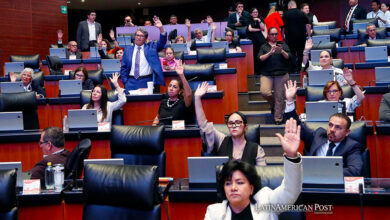Latin America: It’s time to spend
Red flags have been raised within the Federal Reserve

Credit is the cornerstone of our society. It’s thanks to credit that we are able to stay ahead and obtain goods and services before their payment, which fosters confidence among nations.
The world’s largest authority regarding credit is the Federal Reserve of the United States of America, as it operates as the Central Bank for Central Banks. Only the Federal Reserve can print dollars which are the standard unit of monetary exchange worldwide. The Federal Reserve’s interest rate determines the cost of borrowing money from the monetary authority and the amount of gain an investor could take from lending the currency to the bank.
Since Ben Bernanke’s days as a Chair of the Federal Reserve in 2006, most decisions are taken by consensus, which makes general settlements, such as the one regarding the definition of the short term nominal interest rate, a group decision. Today’s Federal Reserve Chair Janet Yellen has continued that tradition.
Donald Trump has the responsibility to appoint a new Chair of the Federal Reserve in February 2018, although Janet Yellen has shown interest in remaining in office. The Republican Wing of the Banking Committee of the United States Congress has spoken heavily against the current chair administration, which leaves John B. Taylor as the favorite contender for the job.
John B. Taylor is an American republican economist from Stanford University who offers a disruptive perspective towards monetary decision making; the economist doesn’t believe in general consensus as much as he does believes in his equations. Allegedly, his system would have prevented the 2008 financial crisis and his premises are widely accepted throughout the economic world.
In the case that John B. Taylor is appointed as chairman of the Federal Reserve, quicker increments on the borrowing rate would be put IGNORE INTO place, forcing a quicker recovery after the 2008 financial crisis.
How would a quicker increment in the Federal Reserve’s rate affect Latin America?
Believe it or not, any wealth withdrawal carried out by an individual in Latin America has its origin in the Federal Reserve as it was, actually, the American Central Bank that lent the money, if it’s traced back to it’s source.
If the Federal Reserve’s interest rates increases, then the national Central Bank will have to pay more money for the acquisition of dollars from the Federal Reserve. In order not to lose money, a given Central Bank will expand its fee to a decentralized financial institution which will ask the final user for more money in order to acquire a fixed amount of capital.
Higher interest rates mean that the overall cost of money is greater and having John B. Taylor as the Federal Reserve’s chair will further limit the amount of responsibly lent money in Latin America. Overall, credit will become more expensive over the next couple of months and, even for nations in recessive cycles, progression to equilibrium could take longer.
Beware of the expansion of the borrowing rate, as it could mean you’ll end up paying more money tomorrow for the same credit you could take out today. Analyze your options, plan for a pricier future.
Latin American Post | David Eduardo Rodríguez Acevedo
Copy edited by Susana Cicchetto





